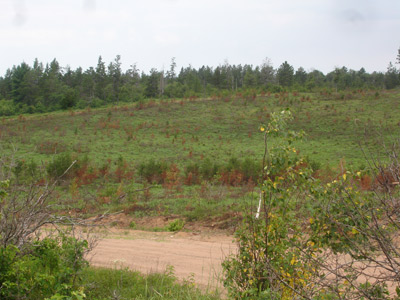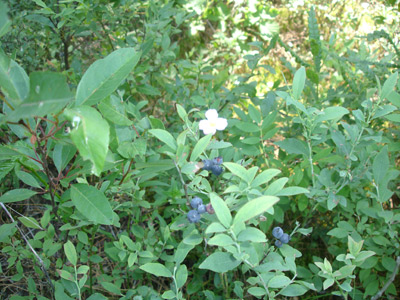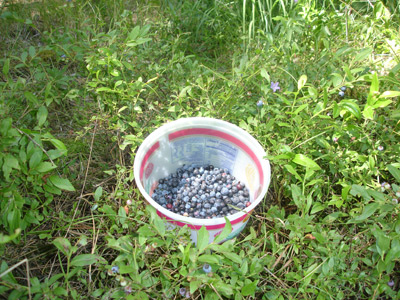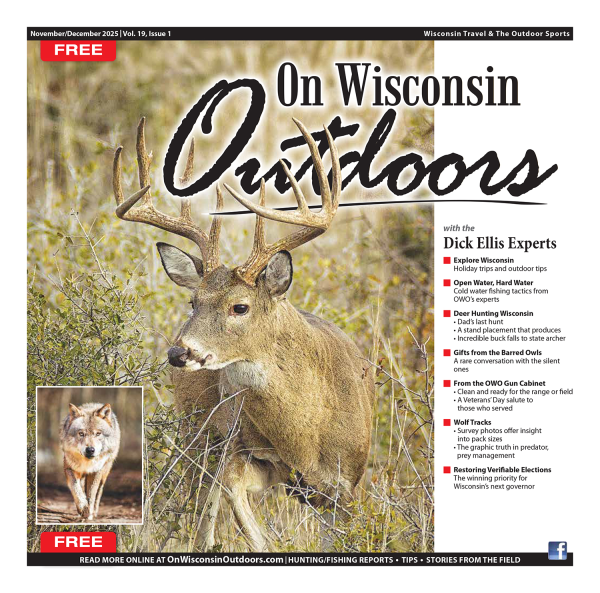FENCEROWS...Blueberry Barrens
By John Luthens
North of Hayward, past the famous musky waters, there is a desert of sorts. It’s a wild barren land of sand, jack pine and bur oak. The fact that a dry land exists scant miles from the borders of big rivers like The Namekagon, St.Croix, and Bois Brule is a testament to the ingenuity of Mother Nature.
The Wisconsin Pine Barrens were nurtured through extensive logging operations in the early 1900’s. Red and white pines were clear-cut for hundreds of acres at a crack, till all that was left was the resilient jack pine, which was soon taken for pulp wood.
When farmers took the land over from the logging companies, they figured to cash in on the clear cutting, raising crops from the timber-felled landscape. But the sandy, nutrient poor soil was depleted quickly, and what the land didn’t take from the farmers, the Great Depression did. Payments couldn’t be met, and much of the land reverted to the State Forestry Department.
So the pine barrens still roll through Northwest Wisconsin today. Plantations of red pine line the horizons now, after forestry efforts have attempted to reseed the virgin forests that once stood there. Wild fires and controlled burns have tried to keep the undergrowth in check. The hearty scrub oaks become blackened by the fires, but they are resilient enough to weather the biggest of blazes.
 |
| Northwest Wisconsin’s Pine Barrens |
When I was young, about the time the mid-July heat beat down hardest on the barrens, my family would trek into the wastelands. Farming crops may have had a hard time making it, but something did thrive in the vast land of pines and sand. - Wild blueberries.
My family journeyed down sandy back roads. We’d turn off on fire lanes. Brush sandpapered the car. It was a family car; and most of the places we parked didn’t have any business carrying a station wagon.
My dad would have his neck craned out the window, looking for telltale spots of blue among the rolling hills. He could hone in on a blue spot the way a hawk tracks down a field mouse.
Mom, on the other hand, shot a secretive glance out the back window, because finding a good blueberry patch is only half the battle; the real art of blueberry picking is making sure your secret patch is secure from public knowledge.
When we found a good patch, it became an all-out sharecropping experience. In good years, we would fill ice-cream bucket after bucket with the wild berries; my parents would, anyway. My brother and I were required to pick at least a quart each, before we could run off and play among the sand drenched hills of the barrens. Filling our quart buckets took an hour to a half-day, depending on how many we ate, and how many times we spilled our buckets after tripping in a pine furrow.
We’d pack a lunch to eat out in the barrens, sitting beneath the cooling shade of a planted red pine forest, and looking down row after row of perfectly planted straightness. Lunch was also a time to pull wood ticks off of each other. My brother and I would have been content to sit under the pines all day. But after lunch, it was back to plucking berries under the burning sun.
Wild blueberries don’t like too much rain, and while they don’t seem to mind the sun, they can’t tolerate too many consecutive days of heat. They have shallow roots to suck the top moisture out of the ground before it disperses into the sandy soil. So depending on the weather, like all crops I guess, some years were better than other. And some years there weren’t many berries at all.
We still went picking in the lean years. But it became more of a searching mission than a harvesting one. Those were the years I really remember, because you weren’t bent over in a stooped position for hours at a time. You roamed the hills, seeing some country. And if you were the one who discovered a patch of blue, buried in a sea of pines and rolling sand, then you were held in reverent status for the remainder of the day-sort of like Kevin Costner’s character finding the first buffalo in “Dances With Wolves.”
I don’t make it to the blueberry barrens on a regular basis anymore. But I go when I can, and last week happened to find me wandering the pine-stunted hillsides once again.
 |
 |
| A hard-searched cluster of berries | A small dividend from the “blueberry barrens” |
There was enough rain this spring to make the blueberry plants a solid shade of green. But weeks of summer heat dried many of the berries out. I’d have to categorize it as a lean year.
I searched the sand roads and logging tracks just the same. It becomes sort of a puzzle, like the ones on the restaurant placemats that children can color on. You know where you start, and you’re pretty sure where you want to end up, but once you’re in the confusing tangle of the barrens, you usually end up simply guessing where you are.
I stopped at several likely looking places, but there were no patches of blue to be found. Finally I just parked the truck and started wandering.
Underneath the scrub oaks and small jack pines, despite the lack of blueberries, I saw that this year’s blackberry crop would be a whopper. I don’t know why the blackberries grow so well in the years that the blueberries don’t. I’m sure there’s a biological reason for it, but I don’t have a clue what it is.
I scared a flock of sharp-tailed grouse from an especially nasty blackberry tangle. The grouse were flying everywhere, and it’s the kind of scene you know will never happen to you when bird season starts up. One grouse sat on a pine branch and just stared at me. I’m not kidding when I say that I actually saw grouse droppings falling from the watching bird. Grouse droppings aren’t as tasty as blueberries, so I moved on.
I finally found a pretty decent patch, although I’m not exactly certain how I lucked onto it. There was no need to look over my shoulder for trespassers, because there was no one crazy enough to brave the hot sun and wood ticks for this year’s meager offering of blueberries.
I was there, though, once again in the pine barrens. It brought back some pretty fine memories too. I didn’t quite pick my allotted quart, but I didn’t spill my bucket either. I call that a good day.









